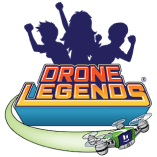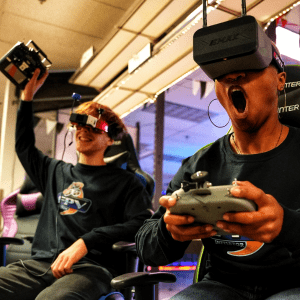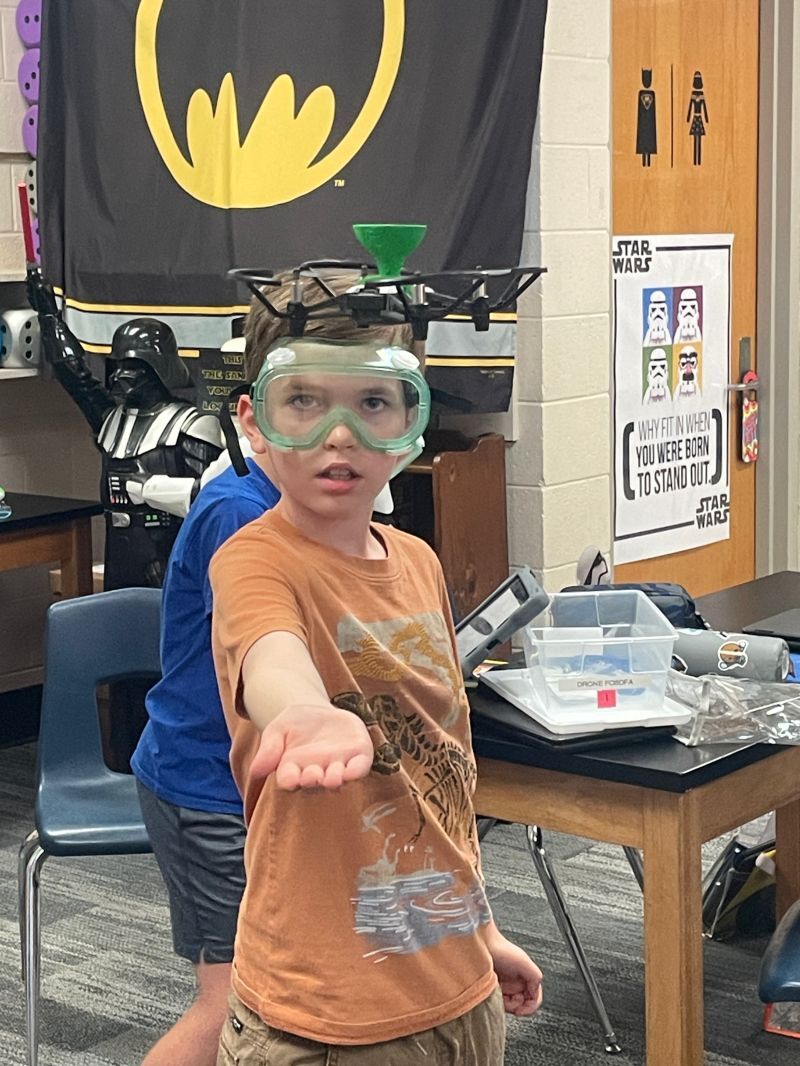We can’t talk about drones without giving attention to other types of robots. Since the commercialization of UAVs (unmanned aerial vehicles) in only the last decade, drones have opened up more opportunities than ever for professionals, hobbyists, and students to explore the advanced world of robotics and tech.
Keep reading to learn what drones and robotics have in common, and how they are both inevitable tools in education today.
Robots and Drones
Robots and drones go hand-in-hand in nearly every industry: agriculture, research, surveillance, and film, for example. Both live under the umbrella of technologies that improve productivity and quality of output in society. The two are capable of automating human and mechanical labor— both of which require lots of skill, time, and money.
Thanks to the many rapid advancements drones have brought to the tech world, the future of robotics as a whole foresees:
- New collaboration across multiple industries
- More affordable manufacturing and purchasing
- Innovations in autonomous mobility
- An increase in machine learning and AI
Because drones are similar to autonomous mobile robots (AMRs) but require extra capabilities like flight, drone innovation has broadened the utility of robots in the real world. They’ve also brought unbelievable learning opportunities to the education world.
Let’s look at how drones and robotics benefit education.
Robotics Skills in 4th-8th Grade
Elementary and middle school robotics skills begin with an understanding of basic technical, programming, and social systems.
As a whole, robotics can help students learn essential career-ready skills. Here are some specifics:
- Science and Math. In any robotics hobby or career, a person needs a strong understanding of upper-level mathematics. Students can start learning basic algebra and calculus, as both are essential for making a robot represent formulas or algorithms. Middle schoolers can get an introduction to physics and geometry— these relate to robots’ movements, equipment measurements, and operation.
- Teamwork. Robotics requires heavy amounts of teamwork. It’s extremely rare for a robotics project to consist of one solitary person. 4th-8th graders can build skills like communication, leadership, constructive feedback, conflict resolution, and multi-interest discussions.
- Creative Thinking. While robotics might seem like a logical field, there’s a lot of creativity involved. Kids can practice being robotics developers by sharing ideas, thinking outside the box, and challenging industry norms.
- Computer Programming. Robots operate with electronics, software, and hardware— not just basic coding languages like C++ or Java. Students can start learning not only programming but intersectional computer languages used among robot manufacturers today.
- Problem-Based Learning. It takes technical skills and soft skills to operate a robot. Students and educators interested in robotics should prioritize PBL. The main lesson? Failure is expected. Trial and error are normal. Real-time troubleshooting is an active part of the role.
Sometimes, robotics might seem too advanced for certain learners. Fortunately, many crossover skills can be learned effectively through drones, which offer a more approachable introduction to many STEM concepts.
Drone Skills in 4th-8th Grade
All drones are robotics, but not all robotics are drones. Today, drones are often more accessible and affordable than robotics programs, which is why so many schools are turning to drone education.
STEM skills learned through drones are similar to robotics skills mentioned above, only more adaptive. Students in fourth grade and younger can learn basic math, science, coding, and teamwork skills required to build a foundation of robotics knowledge.
Middle school students can learn drone skills and quickly advance into more complex robotics features. With drones, there’s an added element of flight and an extra sense of responsibility to fulfill aerodynamic challenges.
Since drones don’t require as many barriers to entry as robotics (such as cost, equipment, and technical knowledge), drone education is a great way for all types of learners to improve their character development. Piloting and programming a drone instills kids with critical thinking, capability, STEM understanding, and teamwork that many careers require.
Drones & Robotics
Drones have demanded huge improvements in all robotics sectors. Think: electronic motors, movement sensors, computing capabilities, software development, battery power, and more. Without drones, developed countries might not have reached such new heights in industry progress.
Think of all the professional fields that drones and robotics sustain in the modern world:
- Agriculture
- Security
- Medicine
- Rescue
- Entertainment
- Delivery
- Mapping
- Conservation
- Meteorology
Even though these improvements are incredible steps forward, let’s not forget they also place new demands on the labor market. Who will build, operate, and maintain these powerful robotics systems? What skills must employees now fulfill?
From computer programming to geospatial education to STEM, drones and robotics play an important role in getting essential technologies into the hands of today’s students.
Mechanical Skills
The future depends on technology and machinery. Everything from health procedures to photojournalism to environmental relief already relies on robotics and drones— and it’s only the beginning. Mechanical skills will be a must-have in the future for more industries than we know now. Drones and robotics for kids build mechanical skills early, instead of waiting until they’re old enough for college or trade school.
Engineering Skills
We need brilliant builders, designers, and construction workers today and moving forward. Drones and robotics tap into the core of engineering in every possible way. The two equip students with curiosity to learn drafting, 3D mapping, prototyping, assembling, and repairing major constructs that humans rely on to survive.
Critical Thinking Skills
To become a more functional society, people must become well-rounded individuals. Critical thinking is a skill that can be learned, and it’s what every person needs to make responsible, informed decisions. Robotics and drone classes can empower kids to reason out different opinions and think about problems as they arise. This encourages critical thought to make improvements when things feel hard.
Teamwork and Competitions
People and play are necessary for life. Kids must grow up knowing how to play well with others and to compete for wins they find meaningful. Introducing kids to drones and robotics while they’re young is a way to promote healthy team play and competition. It gives them permission to try difficult things. It provides them an outlet for exploration of success and failure, both of which are part of the real world.
Robots, Drones, AI, and the Future
If you’re a tech nerd, drone enthusiast, STEM educator, or any combination of the three, robotics deserves your attention. At Drone Legends, we’ve spent years working with experts and researchers to develop a curriculum that empowers today’s students to pursue STEM interests that improve the future.
To help inspire the next generation of STEM professionals and robotics developers, start a drone curriculum at your school. Want to learn how? Reach out to Drone Legends today.




